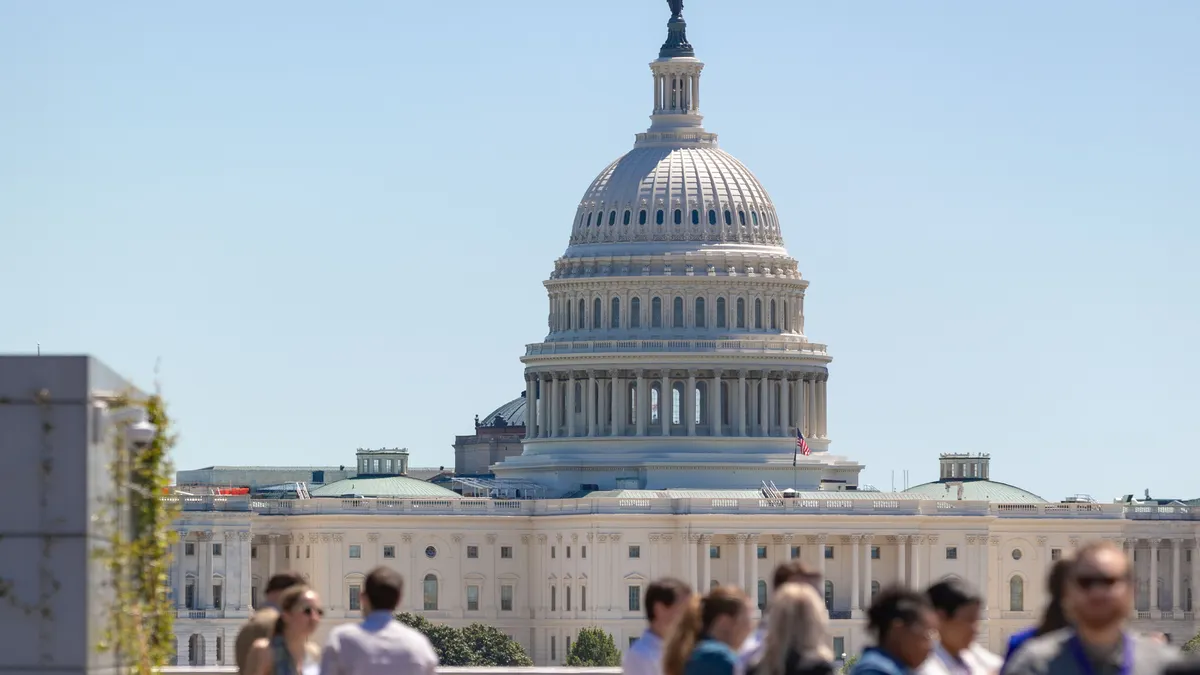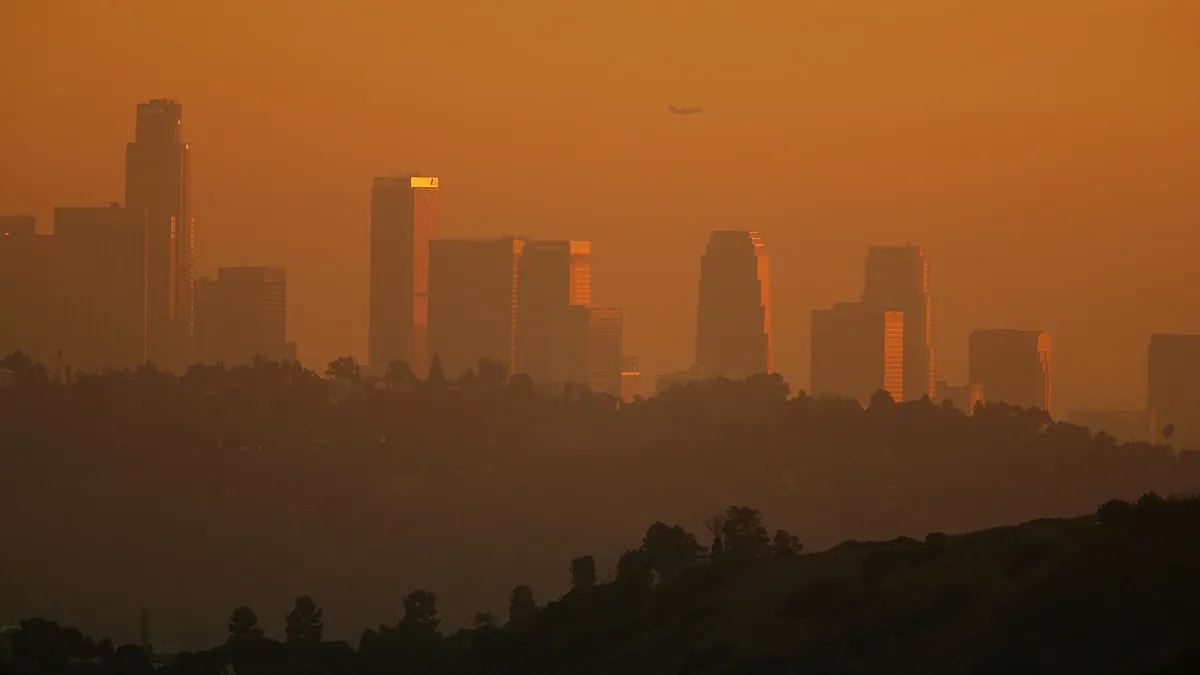The U.S. EPA announced that 45 states and dozens of metropolitan areas submitted priority climate action plans as part of applying for the agency's Climate Pollution Reduction Grants program. The program, created through the Inflation Reduction Act, makes $4.6 billion in competitive grant funding available for governments to implement the measures their plans describe.
Under a previous program phase, EPA distributed $250 million to governments to help them develop their plans. Recipients included 45 states, the District of Columbia, Puerto Rico, 80 metropolitan statistical areas, four territories and more than 200 tribes and tribal consortia.
"The diversity of ideas and ambitious initiatives from all across the country reflect the seriousness that states and metropolitan areas are bringing to the work of cutting pollution, acting on climate change, and meeting their local objectives,” Jennifer Macedonia, deputy assistant administrator for EPA’s Office of Air and Radiation, said in a statement last week. “These climate action plans demonstrate substantial progress for states and local governments, in coordination with their communities, to chart their path forward — building healthy communities and competitive local economies where climate solutions can thrive.”
Comprehensive climate action plans are due by the second half of 2025 for most grantees. Those plans will include a broader array of measures to reduce greenhouse gases.
Many of the priority plans include measures to reduce emissions from the waste sector. While the sector's emissions have fallen 29.3% since 1990, it still contributed 166.9 million megatons of carbon dioxide equivalent, or CO2e, in 2022, according to the most recent Inventory of U.S. greenhouse gas emissions and sinks. That count excludes emissions from waste incineration, which are counted in the energy sector. Landfills are also the third largest source of methane pollution, a potent greenhouse gas, per the EPA report.
A variety of voices in the waste and recycling industries viewed the CPRG program as a major opportunity and pushed governments to incorporate zero waste, landfill gas mitigation, composting and other policies in their plans. Three of the four largest states by population submitted plans; Florida did not. A selection of their waste priorities and the resulting greenhouse gas emissions impact expected is below.
California
Food waste prevention and edible food recovery
The state proposes leveraging its existing programs to build an entirely new, holistic food waste prevention program. The program would aim to recover at least 20% of currently disposed edible food by 2025 and support current food loss and waste mitigation efforts like food waste tracking software, prevention equipment and training. The state envisions the program aligning with existing goals and efforts created in response to organics diversion bill SB 1383. The state projects additional federal support would result in about 101,000 megatons of CO2e emissions avoided from 2025 to 2030 and 604,000 megatons avoided through 2050.
Organics recycling
The plan envisions that federal funding would fill implementation gaps in California's existing SB 1383 organics recycling infrastructure programs. The state noted that it awarded more than $130 million in Organics Grant Program funding at the end of last year but waitlisted 10 eligible projects due to lack of funds. It estimates the grant recipients could reduce emissions at an approximate cost effectiveness of $250 per megaton of CO2e. The state further envisions that enhanced funding for organics recycling infrastructure programs could avoid about 80,000 megatons of CO2e emissions from 2025 to 2030 and 479,000 megatons through 2050.
New York
Organics recycling
The plan notes New York has so far received $434,000 in federal funding from the U.S. Department of Agriculture's Composting and Food Waste Reduction Agreement program. While New York already has provided $11 million in funding for food scraps recycling and donation since 2010, the state proposes issuing an additional 20 grants by 2025 and another 20 grants by 2030. It envisions those grants supporting organics recycling in a variety of ways, including "starting or expanding a food scraps composting facility, expanding a yard trimmings composting facility to accept food scraps, starting a food scraps drop-off program, purchasing equipment needed to process food scraps, or purchasing equipment to transport food scraps," per the plan. The state expects 220,000 megatons of CO2e emissions to be avoided from 2025 to 2030 and 1.2 million megatons to be avoided through 2050 as a result of its work on organics recycling.
Landfill emissions
In addition to acknowledging a need for source reduction, the plan sets a goal to complete 10 landfill gas reduction projects within five years. Those projects could include "installing gas collection systems sooner after waste placement, installing specialty landfill gas collectors for difficult to access areas, or enhancing gas dewatering systems to increase collection efficiency," per the report. It identifies existing programs, like the Section 48 Investment Tax Credit for energy properties and the state's existing landfill closure and gas management grant programs, as potential supporting programs for this goal. The state anticipates its efforts could avoid 630,000 megatons of CO2e emissions through 2030 and 7.16 million megatons by 2050. It also notes sizable co-pollutant emissions reductions the plan could achieve, including 665.1 metric tons of nitrogen oxides, 511.9 metric tons of sulfur oxides, 76.6 metric tons of volatile organic compounds and 10.1 metric tons of carbon monoxide.
Texas
Landfill energy
The plan envisions the state taking several measures to capture more energy from landfills. They include supporting the creation of biofuels through methane capture from landfills and wastewater treatment plants as well as through surplus biomass. The state estimates doing so could avoid 2.38 million megatons of CO2e emissions by 2050. The state also proposes combining solar arrays with biogas at closed landfills to generate energy.
Recycling
The plan groups together a range of waste-reduction measures that don't fall under industry, transportation or power and puts them into the “other measures” category. These include projects that add recycling infrastructure and projects that increase recycling or composting. The plan anticipates such projects would cumulatively avoid 4.56 million megatons of CO2e emissions.




















